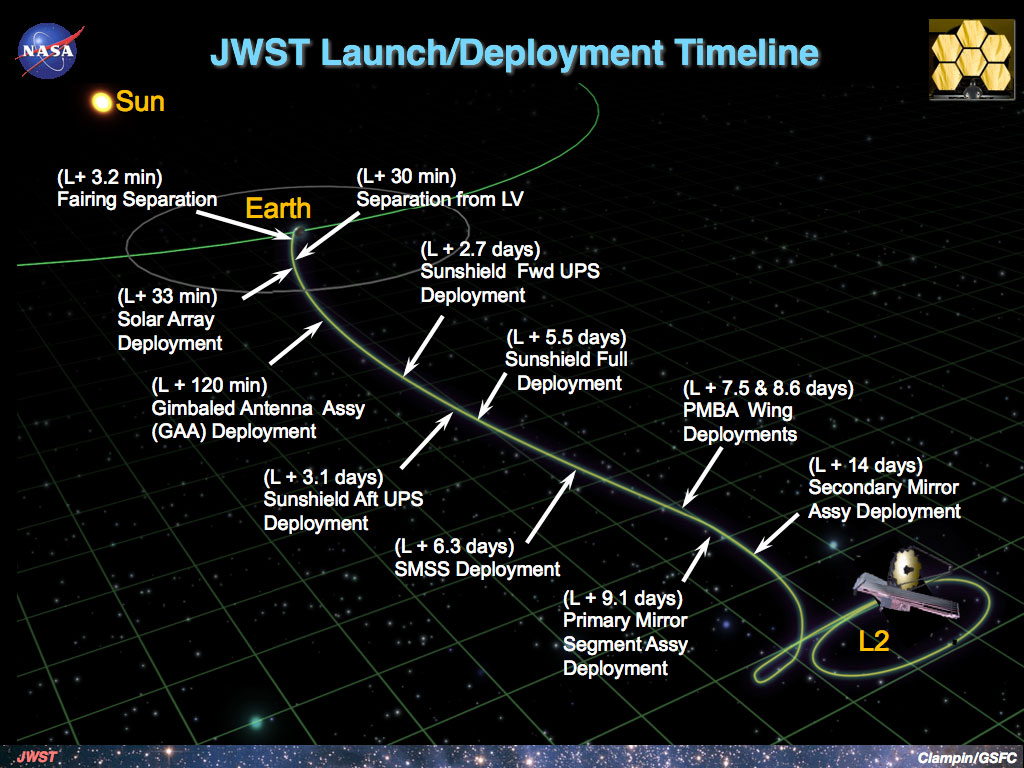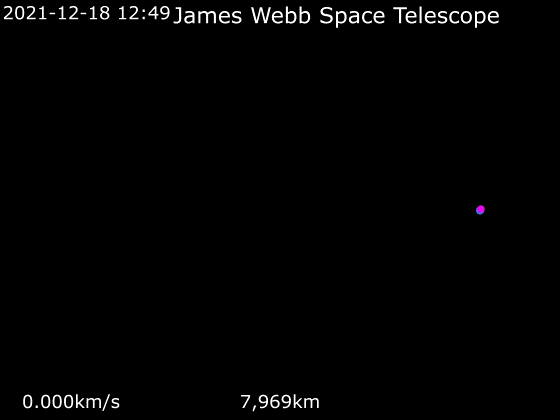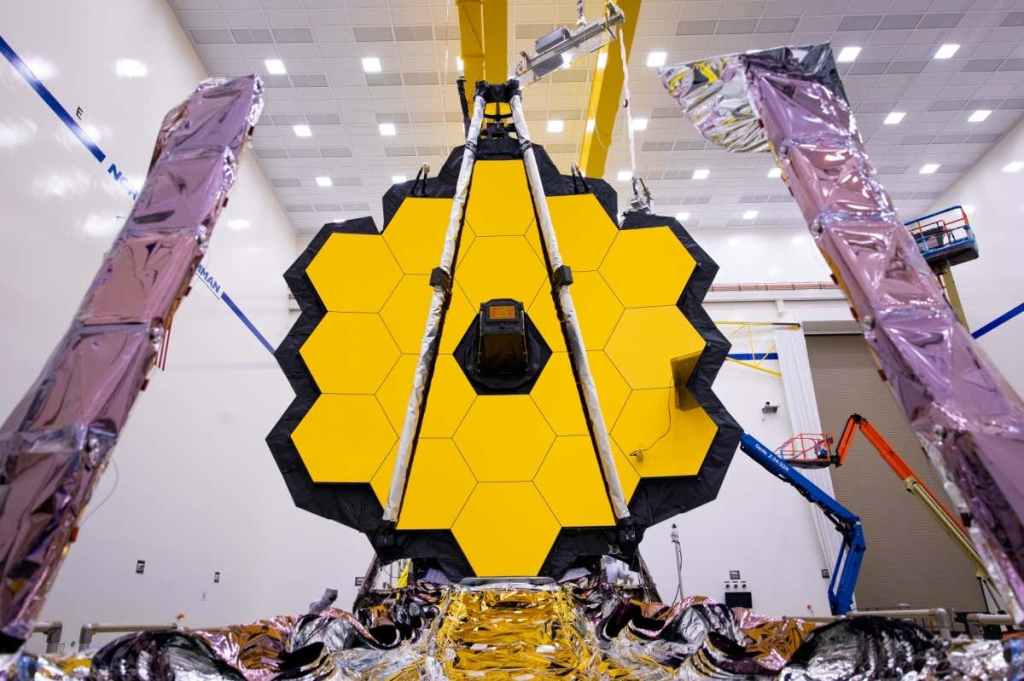The largest, heaviest and most expensive telescope of all time will launch in a week on its way to the L2 Lagrange point, which lasts about a month. You will find all the information in this article, which will be pinned to the top of the blog until the launch. We will also add ongoing live updates.
Plans
Plans for a similar telescope appeared as early as 1989. The concept included a telescope called the Hi-Z with a mirror diameter of 4 meters. The telescope was to be located at a distance of 3 AU (Astronomical Unit). Such a distant orbit is particularly beneficial due to the reduction of light noise from zodiacal dust. Other plans also talked about a telescope called NEXUS.
It was not until 1998 that a form came that was very similar to today’s one – the final one. The design of the telescope at the time was the Next Generation Space Telescope (NGST). A mirror with a diameter of 8 meters was planned. Already at that time, it was planned to place in the liberation point L2. In 2002, the telescope was named after NASA’s second administrator, James Edwin Webb.
Delays
In 2002, the diameter of the telescope mirror was reduced by 2 meters to 6 meters. As early as 2004, plans for NEXUS failed and projects changed. In 2007, ESA (Europe Space Agency) and CSA (Canadian Space Agency) were also invited to the project, the name of the telescope was changed and the launch was planned for 2011. However, it did not catch up and in the end, it was postponed until 2021.
Launch and deployment sequence
As of December 2021, the launch (flight VA256) is scheduled for 25 December 2021 on an Ariane 5 launch vehicle from the Guiana Space Centre in French Guiana.
Launch timeline (it’s not available yet, if it will, I’ll add it here).
Deployment sequence
(all times are approximate)
| Time (DD:HH:MM:SS) | Event | Note |
|---|---|---|
| T+00:00:03:00 | Fairing sep. | Separation of fairing, which is no longer needed in the upper atmosphere. |
| T+00:00:30:00 | Separation | The telescope will separate from the last stage of the Ariane 5 rocket. |
| T+00:00:33:00 | Solar panel deployment | The solar energy panel opens ~3 minutes after separation. |
| T+00:02:00:00 | Gimballed antenna Assy (GAA) deployment | Opening the antenna to ensure communication with the Earth. |
| T+02:16:00:00 | Sunshield fwd UPS deployment | |
| T+03:02:00:00 | Sunshield aft UPS deployment | |
| T+05:12:00:00 | Sunshield full deployment | |
| T+06:07:00:00 | SMSS deployment | SMSS – Secondary mirror support structure |
| T+07:12:00:00 | PMBA Wing deployment | |
| T+08:14:00:00 | PMBA Wing deployment | |
| T+09:02:00:00 | Primary mirror segment assy deployment | |
| T+14:00:00:00 | Secondary mirror segment assy deployment |

After about a month of travel, the telescope reaches liberation point L2, which is located on the path between Earth and Mars. But JWST will not be located on it but will orbit it.



Mission
The James Webb Space Telescope has four key goals:
- to search for light from the first stars and galaxies that formed in the Universe after the Big Bang
- to study the formation and evolution of galaxies
- to understand the formation of stars and planetary systems
- to study planetary systems and the origins of life.
These goals can be accomplished more effectively by observation in near-infrared light rather than light in the visible part of the spectrum. For this reason, JWST’s instruments will not measure visible or ultraviolet light like the Hubble Telescope but will have a much greater capacity to perform infrared astronomy. JWST will be sensitive to a range of wavelengths from 0.6 (orange light) to 28 micrometres (deep infrared radiation at about 100 K (−173 °C; −280 °F)).
JWST may be used to gather information on the dimming light of star KIC 8462852, which was discovered in 2015 and has some abnormal light-curve properties.
The planned scientific mission is 6 years, which follows the commissioning phase. But this mission can be extended in the same way as the Hubble Space Telescope, which has been in operation for more than 30 years!
Updates
First of all, it must be said that a delay of one or more days is possible. The start is currently scheduled for December 25 at 12:20 UTC. Rollout is planned for today.
The telescope was placed on the Ariane 5 rocket on December 14.
23rd December, 6:30 p.m. UTC
Ariane 5 rocket arriwed at the pad!
22nd December, 9:30 p.m. UTC
The launch date, December 25 has been confirmed. Rollout is planned for tomorrow.
21st December, 10:00 p.m. UTC
The launch has been postponed until December 25!


Leave a comment